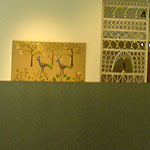Euroacademia Conferences
 Europe Inside-Out: Europe and Europeanness Exposed to Plural Observers (9th Edition) April 24 - 25, 2020
Europe Inside-Out: Europe and Europeanness Exposed to Plural Observers (9th Edition) April 24 - 25, 2020 Identities and Identifications: Politicized Uses of Collective Identities (9th Edition) June 12 - 13, 2020
Identities and Identifications: Politicized Uses of Collective Identities (9th Edition) June 12 - 13, 2020 8th Forum of Critical Studies: Asking Big Questions Again January 24 - 25, 2020
8th Forum of Critical Studies: Asking Big Questions Again January 24 - 25, 2020 Re-Inventing Eastern Europe (7th Edition) December 13 - 14, 2019
Re-Inventing Eastern Europe (7th Edition) December 13 - 14, 2019 The European Union and the Politicization of Europe (8th Edition) October 25 - 26, 2019
The European Union and the Politicization of Europe (8th Edition) October 25 - 26, 2019 Identities and Identifications: Politicized Uses of Collective Identities (8th Edition) June 28 - 29, 2019
Identities and Identifications: Politicized Uses of Collective Identities (8th Edition) June 28 - 29, 2019 The European Union and the Politicization of Europe (7th Edition) January 25 - 26, 2019
The European Union and the Politicization of Europe (7th Edition) January 25 - 26, 2019 7th Forum of Critical Studies: Asking Big Questions Again November 23 - 24, 2018
7th Forum of Critical Studies: Asking Big Questions Again November 23 - 24, 2018 Europe Inside-Out: Europe and Europeanness Exposed to Plural Observers (8th Edition) September 28 - 30, 2018
Europe Inside-Out: Europe and Europeanness Exposed to Plural Observers (8th Edition) September 28 - 30, 2018 Identities and Identifications: Politicized Uses of Collective Identities (7th Edition) June 14 - 15, 2018
Identities and Identifications: Politicized Uses of Collective Identities (7th Edition) June 14 - 15, 2018
Exhibition Becomes Politics. How Art Exhibitions About the Ukrainian Crisis Bring Up Diplomatic Contradictions
-
-

-
Presentation speakers
- Sebastian Loewe, Martin-Luther University, Halle-Wittenberg, Germany
- Download presentation
Abstract:
The paper scrutinizes two art exhibitions in Berlin and Kiev about the current political crisis in Ukraine in light of their implications for transcultural understanding. Not only did the art exhibitions called “The Ukrainians” (DAAD gallery, Berlin) and “Fear and Hope” (Pinchuk Art Center, Kiev) want to foster alternative views and a critical focus on the crisis, but the art institutions themselves emphasize the importance of a transcultural approach that exceeds political borders. The artworks presented in the exhibitions, especially the works in Berlin, counteracted these particular institutional goals. The paper analyzes selected, exemplary artworks from Nikita Kadan, Zhanna Kadyrova, Yuri Leiderman and the artist group “Revolutionary Experimental Space”, as well as the curatorial and discoursive framework of the shows, and examines their consequences for the institutional goals. As the paper will demonstrate, the exhibitions result in contradictions in terms of the higher purpose of cultural diplomacy, updating a persistent narrative of the barbaric East as enemy stereotype. The paper is complemented by a short methodological chapter which suggests a broader theoretical approach to cultural diplomacy.
-
Related Presentations

Tracing the Gender Gap in Public Support for European Membership
- Gitta Glüpker-Kesebir

National Accounts Versus Business Accounting: Form and Content
- Nicoleta Andreea Savu

The EU’s Participation In Global Financial Governance
- Marina Strezhneva















